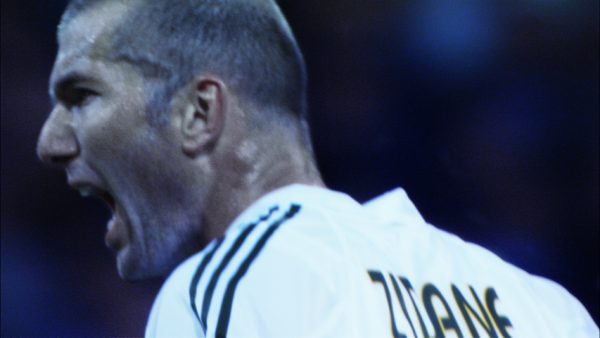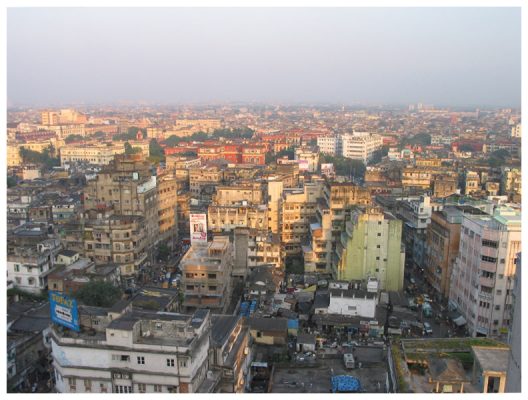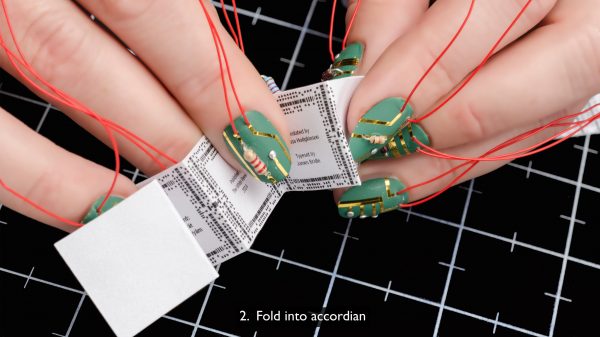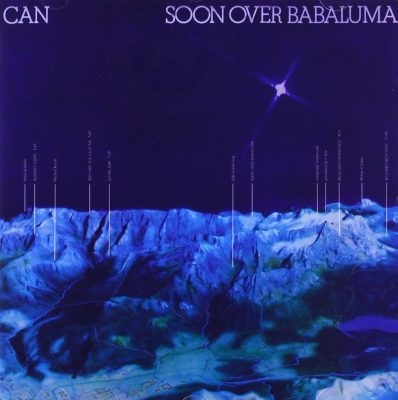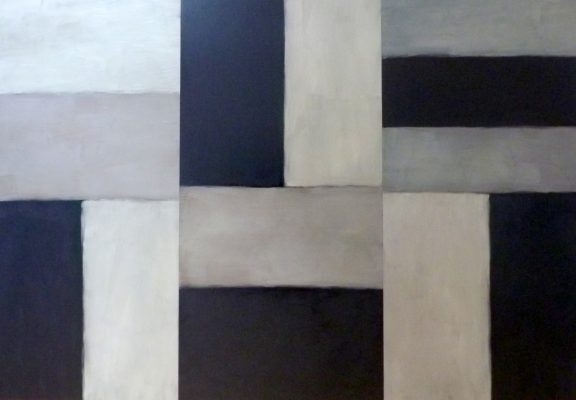1998
In the summer of 2006, at a bar off Odéon, a girl I didn’t know drew a French flag on my cheek with a blue-white-and-red roller. It was the World Cup quarter-final and France were playing Brazil. When that game ended (1-0 from a Thierry Henry goal in the fifty-seventh minute), my friends and I ran outside to Boulevard Saint Germain to hear the cacophony of car horns and watch a group of young men spreading a French flag so large it stretched across the boulevard, enveloping the cars on the road, turning Saint Germain into a river of the three-coloured fabric. As we walked towards the Seine, the Saint Michel fountain was full of people singing and shouting ‘qui ne saute pas n’est pas Français!’ (‘You’re not French if you don’t jump’).
That summer, I learned the words to the Marseillaise. Although at that point I’d lived in France for three and a half years, I’d never picked up anything beyond ‘Allons enfants de la Patrie / La jour de gloire est arrivé!’ Perhaps because that idea, patrie, which impossibly combines homeland, nation, birthplace, feels untranslatable. Or maybe it was the feeling that the anthem creates an image of France that feels white and monolingual and Catholic — an idea of France that includes few of its people. I knew that football players were often criticised for not singing along to the Marseillaise before matches, because they felt the song did not represent them. I understood them. I was still looking for a France that I could celebrate.
*
The celebrations of that summer, with people pouring into the Paris streets, marked a distinct shift from the intense demonstrations in the city that year. The previous autumn, dissent arose following the death of two teenagers, Zyed Benna and Bouna Traoré, who were electrocuted when police chased them to a power substation. The demonstrations in response sparked violence across Paris and the rest of the country. Months later, in the spring, students were demonstrating over a new labour bill that introduced ways for employers to fire workers under the age of 26 without repercussions. In the Paris streets that year, it was normal to see cars burning and police in riot gear. But suddenly, by summer, everyone was singing the Marseillaise.
The road to the final of the 2006 World Cup was paved with spontaneous, joyful signs of unity. After games, the familiar shouts – Zidane Président! and Allez les Bleus! — would echo everywhere. People collected around the national team, not as a distraction to erase social difference in the post-colonial country, represented by a multi-ethnic group of players, but rather as an opportunity to recognise it, to find new symbols for a possibly new France. When the team made it to the 2006 final, it recreated the sense of easy joy many people recognised from 1998, when France hosted and won the World Cup. Then, the 26-year-old Zinédine Zidane, who scored two of France’s three goals against Brazil in the final, was the symbol of the accomplished, beloved French team. Born in Marseille, the son of Kabyle (a Berber ethnic group originating in Northern Algeria) immigrants who moved to France in 1953, before the beginning of the Algerian War of Liberation, Zidane was also a symbol of the national team whose success was swiftly appropriated to hail French multiculturalism. Comprised of several second-generation sons of immigrants from the former French colonies, the 1998 French national team was described as ‘black, blanc, beur’. Black, for players who are often the descendants of parents from West African countries colonised by France. Beur is Arab in verlan (a French slang which involves flipping over the syllables of a word – verlan itself is verlan of l’envers [inverse]). Blanc means white. Football is a mirror of society, and in France it reflects the aftermath of centuries of colonialism. In 1998, the millions of people who went out to celebrate the country’s first World Cup title on the Champs-Élysées waved French and Algerian flags side by side.
In the days after that victory, Jean-Marie Le Pen, leader of extreme-right party the Front National, praised Zidane as ‘a son of French Algeria’. That anyone would still refer to former colonies as French feels like a chilling wave from the past. Zidane has often skirted discussing politics directly, knowing that his words are likely to draw attention and that his image, his story and his success will be appropriated for political gain. This has made it much easier for the French to love him without having to confront the difficult questions about racism, class, and the country’s colonial legacy that Zidane’s family story embodies. Uncharacteristically, in 2017, Zidane publicly declared his support for Emmanuel Macron in the second round of the French Presidential election (against Marine Le Pen of the Front National, Jean-Marie Le Pen’s daughter). ‘The message is always the same, just like in 2002,’ Zidane said (translation mine). ‘I’m far from all of these ideas of the Front National. We need to avoid them to the maximum. Extremism is never good.’ In 2002, as in 2017, the Front National made it to the second stage in the French two-round presidential election system, and both times the other candidate (Jacques Chirac in 2002, Macron in 2017) won by a large margin. In 2002, Zidane declared that the Front National did not align with the values of France. This is a story France loves to tell itself — the ‘good immigrant’ Zidane, reassuring the nation that it is not extremist.
2006
There were twenty-two players on the pitch at the Olympic Stadium in Berlin for that World Cup final in 2006. But thinking back, it was a duel. Zidane and Italian defender Marco Materazzi. Zidane scores first, seven minutes in, from the penalty spot, after a foul by Materazzi on winger Florent Malouda. In the nineteenth minute it’s Materazzi, heading in a corner kick delivered by midfielder Andrea Pirlo. Materazzi almost heads another one in and Malouda clears it from behind the goalkeeper; Lilian Thuram blocks Italian legend Francesco Totti from scoring on his last international game for Italy; Luca Toni scores from an offside position. Balls hit the crossbar, Thierry Henry passes the defence numerous times, the Italians never stop attacking, Malouda and Franck Ribéry miss numerous shots from outside the penalty box. At full-time, it’s still one-all. Thirty minutes of added time to break the tie, and if the score doesn’t change, the game will go to penalties. Deep into extra time Zidane heads the ball so forcefully that saving it, the Italian keeper, Gianluigi Buffon, falls from the impact.
By the 108th minute, the players are exhausted. There’s a sense of lingering slowness; a lack of attention. When it happens, the referee doesn’t see it, nor do the pundits. But it’s caught on camera. I’ve seen it so many times now that it almost feels familiar. I can’t remember not knowing this. In the replays, it’s slow and decisive, in a way that almost strips the moment of its violence: Zidane, turning towards Materazzi, headbutts him in the chest.
I remember everything. I remember how the camera initially focused on Materazzi on the ground. I remember the commentator gasping, ‘Oh, oh!’ I watch it again on YouTube: what he actually says is ‘Ooooh, Zinédine’, and continues, ‘Pas ça’. Not that. ‘Pas ça, Zinédine.’ The referee goes to the linesman. A few long seconds pass, maybe a minute, in which the whole world realises that football is different now, that something momentous has happened, something that will forever be referenced. Then, the red card. ‘Oh, non!’ shouts the commentator. Zidane takes off the captain’s armband. He passes by the trophy as he steps off the field. It’s his last game: he’ll retire that summer. France lose the final on penalties, 3-5.
After the loss, my friends and I lingered on a bench outside the bar where we’d watched the game. I remember not being able to say much except ‘Je suis déçue’ — I’m disappointed. The language was still new enough to me that the words clung to the roof of my mouth, felt sticky and heavy. I remember worrying about Zidane’s legacy. I had thought he represented a France that I could stay in, a France that would feel less conflicted to an immigrant, a France that might change. In the summer of 2018, when France won the World Cup for the second time, I was elated, though by that point I had not lived in France for over a decade. I continued to support France because I identified with the French team without thinking about it, because I lived there, because I had shared that experience of 2006. But now I know: it wasn’t belonging in France that I was identifying with, but the impossibility of fully attaining that sense of belonging.
*
Just before the 2002 World Cup, the journalist John Lichfield published a feature in the Independent about Zidane’s childhood neighbourhood of La Castellane, in Marseille. Built in the early 1950s to house French citizens who escaped Algeria during the country’s War of Liberation, the modernist housing estate became a home to many immigrant communities and is now majority second-generation families descending from France’s colonies, especially those in North and Western Africa. For the article, titled ‘In the Footsteps of Zidane’, Lichfield spent a lot of time at Place de la Tartane, a cement square in the middle of the cité where the local kids play football, talking to them about Zidane. One teenager showed him the house where ‘Zizou’ grew up, on the border of the square. I look it up on Google Images – a long, narrow, empty space paved with pinkish bricks (Lichfield suggests Zidane was ‘naturally’ a midfielder, ‘given the shape of the long, thin, concrete pitch on which he played from the age of five’).1 The square stands elevated from the road on pilotis, with parking lots stacked beneath it. The architects intended to carve out new public areas, to maximise their use of space. Instead, the photographs I see online are grey, with dark puddles in the middle of the square. Many of these images accompany articles about the renovation of La Castellane in an attempt to transform the neighbourhood, flanked by highways and thus isolated and ripe for crime. In France Bleu’s reporting on the redevelopment, a resident named Karima says, ‘This neighbourhood will change. Like Zidane. He evolved. We would love for the area to change in the same way.’2
Lichfield writes that Zidane was ‘condemned to excellence’ – that excelling in something is the only possible chance to escape the dearth of opportunities offered in a place like a majority-migrant neighbourhood in Marseille. Sport – and especially football, which is often well-organised in poor communities as an institutional way of keeping kids ‘off the streets’ – is one of few ways to do that. Zidane represents possibility for the kids Lichfield meets; he also incarnates the rarity, almost impossibility, of such options. At the end of the article, Lichfield acknowledges that all the kids he met playing football in the neighbourhood’s abandoned public areas were too old to become professional players: if they weren’t already climbing the ranks of the youth team academies in Marseille or Bourdeaux, they weren’t going to get there. ‘They must, in their hearts, know that,’ he writes, yet concludes: ‘Only one, Kalef, aged 19, spoke of any other ambition. He said that it was his hope that, some day, he would “get a job.”’
For these kids, Zidane is a legend. The rest of the country – the France of patrie, of opportunities and access and birthright – assumes he is also a role model for them. The gap between legend and model is the story that France loves telling itself about French citizens from the former colonies: not only does Zidane represent France in that blue kit, he should also function as a reminder for other second-generation French citizens that they, too, can belong, if only they excel.
2018
Speaking of stories the nation loves to tell itself: in 2018, people in Paris were wearing T-shirts reading ‘Liberté, Égalité, Mbappé’. Mbappé, for Kylian Mbappé, the French team’s 19-year-old star. Before the World Cup, Nike, Mbappé’s sponsor, ran a series of ads reading ‘1998 was a great year for French football. Kylian Mbappé was born.’ The joke has a lightness to it, maybe a desire to be young, to start afresh, to shed the political weight associated with the conversation around the varied backgrounds of the 1998 team.
*
The French team that won the 2018 World Cup was similar in its makeup to the team that won the 1998 title and the one that reached the final in 2006, but it had a very different attitude. It was celebrated not as an image of a united France but as a representation of a world defined by colonialism and migration. When all the African teams were eliminated in the group stage of the 2018 competition, France – with a squad including more than 15 players with African heritage, including Mbappé, whose father is Cameroonian and mother Algerian – was hailed as ‘the last African country’ in the tournament. When Samuel Umtiti, who was born in Cameroon and moved to France when he was two years old, scored the goal that put France ahead of Belgium in the semi-finals, one Cameroonian tabloid plastered its front page with the headline ‘Cameroon Qualifies France for World Cup Final.’
The relationship between football and national identity is historically complex. FIFA, the international governing body of football, introduced rules concerning eligibility to play for a national team only after the 1962 World Cup. The guidelines, written at the peak of decolonisation, become an example of a postcolonial world. Under the new rules, players can only represent one country in their career, and they are eligible to play for either their country of citizenship or the country of their parents’ or grandparents’ birth. They’re allowed to switch allegiances if they only played in youth teams or friendlies for a given nation. In the 2018 World Cup, Brazilian player Mário Fernandes represented Russia, a country where he naturalised in 2016 after playing for CSKA Moscow for a few years: legend is that he missed the flight that would have taken him to the 2011 Superclásico de las Américas (a friendly match waged yearly between Brazil and Argentina) and thus he only represented Brazil once, in a friendly against Japan in 2014, and could switch allegiances and play for host nation Russia in 2018 (they reached the quarter-finals, where Croatia beat them).
Few players in history have represented countries where they naturalised. More often, a player’s dual (or multiple) allegiance is on account of family history – often tales of colonialism and migration, often involving Europe and its former colonies, and often involving players who grew up in Europe as the children of immigrant parents and/or colonial subjects. Riyad Mahrez, who captained Algeria’s national team when they won the 2019 Africa Cup of Nations (and scored the winning goal), was born in France and played for France in youth levels. Pierre-Emerick Aubameyang was eligible to represent four nations –France, Italy, Spain, and Gabon – and chose the last because his father was also a footballer, who had captained the Gabonese team. A quarter of the players in the USA team at the 2014 World Cup in Brazil were born in Germany, the sons of US military stationed in one of the numerous American bases there.
*
The US, a country with little football infrastructure, has thus benefitted from having European players on its national squad. USA Today ran a story in the lead-up to the 2014 tournament headlined ‘Is the US World Cup team “American” Enough?’ When they faced Germany in the group stage of the tournament, the game was an opportunity for the German-born Americans to show Germany what they were missing. They lost; Germany went on to win the tournament, while the US was kicked out by Belgium in the next round. Four years later, in 2018, Morocco fielded what Tariq Panja at the New York Times called ‘an imported team’, comprised almost entirely of players born in Europe and trained in football academies there. It was the first World Cup for which Morocco had qualified in over twenty years: what Panja doesn’t write about is whether and how these different personal histories affect not only the players’ identification with the country they represent, but also the country’s relationship to the players who represent them. The focus is always on the link to Europe: a historical link defined not only by migration and colonialism but by their economic aftermath, too.
*
The 2018 French team has been said to be less political – or less politicised – than the 1998 one. Though the team’s composition was as mixed as the ’98 and 2006 teams, there was a lesser emphasis on it being ‘black, blanc, beur’. That’s because this team has something else unifying it: the experience of the French suburbs, which combines race, colonial history, and class in ways that were not yet being discussed in 1998. The 2018 players were almost all born in the early- to mid-1990s. They won’t remember much of the 1998 World Cup. They were kids during the 2005 riots, who came into adulthood during Occupy Wall Street. They have a different sense of identity, where national affinities intersect. They listen to African music – the song ‘Magic in the Air’ by Ivorian band Magic System and Moroccan singer Ahmed Chawki is the team’s song, played across the PA system when they score. They hashtag #ViveLaFrance. For many of them, the main identity they highlight is their suburban one, which fuses class and migration.
On the opening day of the 2018 World Cup, the New York Times ran an article about France’s national team, calling the Paris suburbs — from which almost half the national squad hailed — ‘the greatest pool of soccer talent in Europe’.3 The lead image for the article was a mural in Mbappé’s hometown, Bondy, in northern Paris. The image shows the young Mbappé, who went pro a month before he turned 17, wearing his Paris Saint Germain jersey. Around him is the message ‘Bondy, a city of possibilities.’
The night of the final, Presnel Kimpembe, the 23-year-old left-back, posted a photo on Instagram of himself with the World Cup trophy.4 He’s in the dressing room, still in his kit, gold medal around his neck. He’s holding the trophy between his legs to free his hands, which he uses to signal ‘95’ with his fingers. 95 is the postcode for Val-d’Oise, the department of Beaumont-sur-Oise, the Parisian suburb Kimpembe is from. All central Paris postcodes begin in 75, whereas suburban postcodes begin with a 9. This distance becomes a mark of the place. Bondy’s zip code is 93140, the first two digits pronounced neuf-trois, that is, an idiomatic ‘nine-three’ rather than quatre-vingt–treize, or ninety-three in French, neuf-cinq not quatre-vingt-quinze for 95. Kimpembe captions his post ‘Mon 95 aussi est Champion du Monde’ – my 95, also world champions – along with the arms in the air emoji, the flexed biceps emoji, the French flag, and the hashtags #ViveLaFrance #LAFORCE #95.
Liberté, Égalité, Mbappé: something new to stand for, and a reminder that questions of nationality and identity are also questions of class. The white players on the team did not grow up in the Paris suburbs: Antoine Griezmann, for example, is from a working-class part of Mâcon, in Burgundy; Hugo Lloris, the captain and goalkeeper, was raised in an upper-class family in Nice; and Olivier Giroud grew up middle-class in a small town not far from the Swiss border in southeast France. The other half of the team share a history in what the French call quartiers difficiles like La Castellane and Parisian suburbs in 95 and 93. On Wikipedia entries for these towns, the lists of notable residents are almost exclusively populated by footballers. It’s an example of Lichfield’s ‘condemned to excellence’: these are places that offer few opportunities, and sport is a rare field in which their residents get to draw attention. The fact that these footballers constantly reassert this history is a reminder of this, as well as a sign that no one forgets where they’re from.
2006
After the 2006 final, Zidane didn’t say what Materazzi told him in the seconds before that moment, before the headbutting, the red card, the end, the loss. I start typing into the search bar ‘what did Materazzi’ and Google autocompletes: ‘what did materazzi say’, ‘what did materazzi say about zidane’s sister’, ‘what did materazzi say to zidane racism’ and the misguided ‘what did materazzi say to zidane yahoo’ (why anyone would Google Yahoo is a mystery I can’t solve). In September 2006, CNN ran an article stating that Materazzi told Italian sports newspaper La Gazzetta dello Sport that Zidane, in response to the Italian consistently tugging his shirt, had said that if he wanted his jersey so much, he would give it to Materazzi after the final whistle (referring to the friendly tradition of players exchanging shirts at the end of a match). Materazzi, in response, muttered, ‘I would prefer your sister.’ It’s the kind of verbal taunting that is common between players, the Italian excused himself. He said he recognises ‘it’s not a particularly nice thing to say’, but that what followed – the headbutting, that is – was not ‘sparked’ by him.5
The CNN article is one of countless I read and reread. I search my memory. Could I have known and forgotten? Could I remember the commentary, ‘non, non, Zizou…’ yet forget whether Zidane ever explained what happened? I Google it again: the Guardian ran an article in 2007 titled ‘And Materazzi’s exact words to Zidane were…’ citing a television interview in which Materazzi gave the same version, with the comment about Zidane’s sister. There were rumours that what he said to Zidane was about the latter’s mother (Materazzi denies it: he lost his mother when he was fifteen years old, he explains, he is sensitive to that kind of joke). Some said he called Zidane a ‘terrorist’ (Materazzi denies). Claudia Rankine, in Citizen: An American Lyric — which explores the language and image of racism — cites lip readers who said that it was ‘big Algerian shit, dirty terrorist, nigger’. 6 Materazzi, again, denies.
FIFA cleared Materazzi of any such claim, saying its investigation concluded that his comments were ‘of a defamatory but not a racist nature’. Rankine doesn’t buy it. Chapter six of Citizen includes several scripts: about Hurricane Katrina in New Orleans; about Mark Duggan, a 29-year-old British man who was shot by the Metropolitan Police in London in 2011; about the teenager Trayvon Martin, who was shot while walking down a Florida street in 2012; and one dedicated to Zidane headbutting Materazzi. Earlier in the book, Rankine writes about tennis player Serena Williams, her outrage and exhaustion at the racism she experienced on and off the court, her anger, and how she kept going. The Zidane section includes a horizontal strip across the pages, a film strip of the headbutting moment. As in the section on Williams, Rankine writes about Zidane with an understanding of how racism winds the person and the player. The entire section is compiled of quotations: from Zidane himself, from Maurice Blanchot, Ralph Ellison, Frantz Fanon, William Shakespeare, James Baldwin, Homi Bhabha, Frederick Douglass, and those lip readers who watched the exchange between Materazzi and Zidane (‘big Algerian shit, dirty terrorist, nigger’).
The pages of the Zidane script are stamped in light grey with the type BLACK – BLANC – BEUR. It looks like the red stamp for boxes reading FRAGILE. The source for the quotes from Zidane that Rankine includes is a 2004 Guardian interview between Zidane and the historian Andrew Hussey. The interview brings together the rare talent and the racism, the sublime elegance Zidane embodies, the violence he experienced, and the violence he enacted. It is not a question-and-answer interview, but Hussey’s attempt at drawing a full, legible character of Zidane from what the player has said to him. Of course, it’s impossible: the privacy, the silence, the few words. But the interview ends with a long quote. Zidane says, ‘It’s hard to explain but I have a need to play intensely every day, to fight every match hard. And this desire never to stop fighting is something else I learnt in the place where I grew up. And, for me, the most important thing is that I still know who I am. Every day I think about where I come from and I am still proud to be who I am: first, a Kabyle from La Castellane, then an Algerian from Marseille, and then a Frenchman.’ 7
*
The French team won the 2018 final against Croatia 4-2. Mbappé scored the fourth. Now there is a second star above the Gallic rooster on the left side of the French national kit: two, for two World Cup wins twenty years apart. So much of what I remember from the night of the 2006 final is my friends and I, on a bench in a public square in Paris, trying to make sense of what we didn’t see. Was it racism, was it Materazzi’s behaviour grating on Zidane all match long, was it the emotion of his last game, was it the occasion, and again, always, was it racism? Was it the way the experience of racism chafes at you, as it did Serena Williams in Rankine’s description, as it must have Zidane as well, tasked with unifying a nation in every World Cup?
I watch the YouTube video of that moment in 2006 again – ‘Ooooh Zinédine … pas ça.’ The 108th minute. Buffon, the Italian keeper, running to the referee to tell him what just happened, the consultation with the linesmen, the red card. Zidane, not objecting. Zidane walking away, passing the World Cup trophy on the pedestal near the tunnel that leads to the dressing rooms. The camera shifts to French manager Raymond Domenech, who cynically applauds the ref, but the commentator disagrees. ‘On ne peut pas protester, meme si c’est passé des choses avant’ (We can’t challenge this decision, even if something happened between them before). I watch it all again: I remember everything about that moment. I now know I don’t know what happened, but I do know that the legacy of Zidane and of that moment is still unresolved. I think about an article published just after the World Cup by American sportswriter Dave Zirin, charting examples of racism in football in the years leading to the 2006 World Cup, which argued that the cup itself was not infested with it until the waning moments of the final game. ‘We don’t know with iron certainty what Materazzi said,’ Zirin writes, ‘but if it turns out to be more of the anti-Black, anti-Muslim, garbage that has infected soccer like a virus, the Italian team should forfeit the cup.’ He concludes: ‘Italy can set the sport back on course, with one simple, stunning gesture. Give the damn thing back.’ 8
‘Give the damn thing back.’ I think back to that night in 2006. I think of Zidane, who once described how focused he is during games, saying he is convinced he could hear the ticking of a watch on someone’s wrist deep in the crowd. I think of Zidane under the floodlights of the Olympic Stadium in Berlin. I think of how it almost didn’t happen – we never saw it, the referee didn’t notice, the audience didn’t gasp – ‘Do you think I wanted to do that?’ Zidane says in the Guardian interview. I remember all these things, and imagine a third star on the deep-blue French kit.
1 John Lichfield, ‘In the footsteps of Zidane’, The Independent (25 May 2002), https://www.independent.co.uk/news/world/europe/in-the-footsteps-of-zidane-189658.html
2 Tony Selliez, ‘À Marseille, la “Tour Zidane” détruite pour lancer la renovation de La Castellane’, France Bleu (11 May 2016), https://www.francebleu.fr/infos/societe/marseille-la-tour-zidane-detruite-pour-lancer-la-renovation-de-la-castellane-1462976827 (translation mine)
3 Rory Smith and Elian Peltier, ‘Kylian Mbappé and the Boys From the Banlieues’, The New York Times (7 June 2018), https://www.nytimes.com/2018/06/07/sports/soccer/france-world-cup-kylian-mbappe.html
4 Presnel Kimpembe on Instagram, https://www.instagram.com/p/BlRSiHulYWW/
5 ‘Materazzi reveals insult to Zidane’, CNN (5 September 2006), http://www.cnn.com/2006/SPORT/football/09/05/italy.materazzi/
6 Claudia Rankine, Citizen: An American Lyric (Minneapolis: Graywolf, 2014), 122
7 Andrew Hussey, ‘Interview: ZZ top’, The Guardian (4 April 2004),
https://www.theguardian.com/football/2004/apr/04/sport.features
8 Dave Zirin, ‘Why I Wear My Zidane Jersey’, Counter Punch (11 July 2006), https://www.counterpunch.org/2006/07/11/why-i-wear-my-zidane-jersey/
